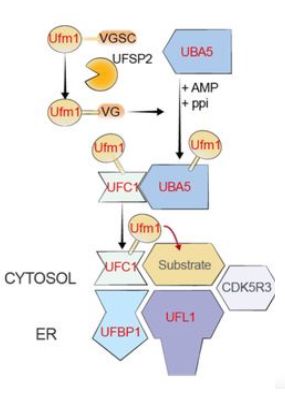Principal Investigator:
Li Gan, Professor of Neuroscience
Shiaoching Gong, Associate Professor of Research in Neuroscience
Background & Unmet Need
- Tauopathies are a heterogeneous group of neurodegenerative diseases characterized by accumulation of tau aggregates in the brain
- Tauopathies include common diseases like Alzheimer’s Disease (AD) and Traumatic Brain Injury (TBI) as well as rare conditions like Frontotemporal lobar degeneration with Tau pathology (FTLD-Tau)
- Tau aggregates in the brain can be formed from the 3R or 4R isoforms of tau, or a combination of both
- Tauopathies are classified as 3R tauopathies, 4R tauopathies, or 3R/4R tauopathies depending on which isoforms are present
- The mechanistic underpinnings of tauopathies are poorly understood and there are currently no effective treatments for these diseases
- Unmet Need: Improved understanding of the mechanisms underlying tauopathies and new treatments for these diseases
Technology Overview
- The Technology:Inhibition of the UFMylation cascade for treatment of 4R tauopathies such as AD of FTLD-Tau
- The Discovery: The inventors engineered a novel model for 4R tauopathies using iPSCs expressing 4R-tau carrying the P301S MAPT mutation, an FTLD-tau-related mutation
- A CRISPRi screen of genes associated with Tau pathobiology identified the UFMylation cascade as top modifier of seeding-induced Tau propagation
- PoC Data: Inhibition of the UFMylation pathway via shRNA knockdown of UBA5 significantly reduces seeding-induced Tau propagation in vitro and in vivo
- Free UFM, an inverse measure of UFMylation cascade activity, is reduced in tangle-bearing neurons in human AD brains, indicating that the UFMylation pathway promotes Tau pathology in AD
Technology Applications
- Treatment of primary tauopathies with 4R tau involvement, such as FTLD-Tau, Progressive supranuclear palsy, Corticobasal degeneration, and Argyrophilic grain disease
- Treatment of secondary tauopathies with 4R tau involvement including AD and chronic traumatic encephalopathy (CTE)
Technology Advantages
- New mechanism of action that isn’t related to amyloid beta for treatment of AD and other tauopathies
- Multiple potential drug development targets within the UFMylation cascade were identified as hits from a CRISPRi screen

Representation of UFMylation cascade.
Publications
Resources
Intellectual Property
Patents
- Provisional Filed
Cornell Reference
- 10763
Contact Information

For additional information please contact
Jeffrey James
Associate Director, Business Development and Licensing
Phone: (646) 814-4218
Email: jaj268@cornell.edu

